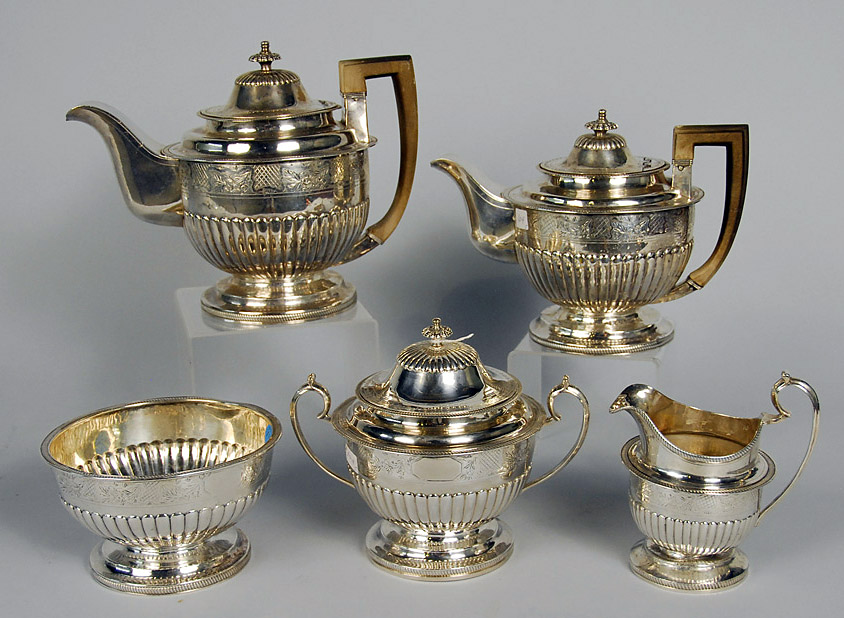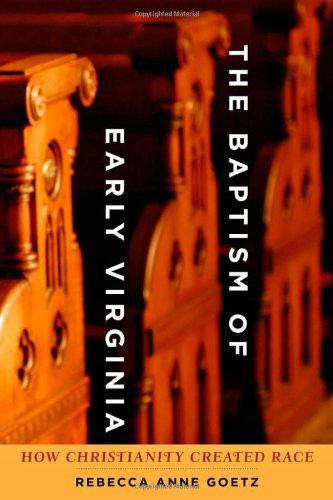
Past is prologue, says new Muskie Archives director Pat Webber
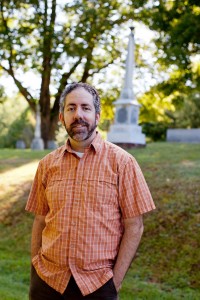
Pat Webber, newly appointed director of the Muskie Archives and Special Collections Library, poses in Riverside Cemetery near campus, where he leads an annual Bates history tour. Photograph by Phyllis Graber Jensen/Bates College.
For Pat Webber, becoming director of the Edmund S. Muskie Archives and Special Collections Library at Bates was in the cards.
As a boy, Webber recalls taking out his baseball card collection and scatter the dog-eared cards on the floor and sort them by the players’ last names.
Then he’d scatter the cards again, and sort them by team. And scatter again, and sort yet another way.
“I should’ve realized when I was 8 that I was going to be an archivist,” says Webber.
The college archivist since 2006, Webber was the Muskie Archives’ acting director this past academic year following the departure of Kat Stefko for a post at Duke University.
Gene Wiemers, vice president for information and library services and college librarian, says that Webber’s appointment, following a national search, “reflects well on his training and experience. The Bates archives operations require archivists who are both innovative and committed to the user. Pat embodies and builds on this tradition.”
Wiemers adds that Webber is “an expert on Bates and Muskie history, and he has played a key role in promoting the use of the archives and special collections among students, faculty, staff and the general public.”
Webber came to Bates from the Special Collections Research Center of North Carolina State University in Raleigh, N.C., where he earned a master’s in public history in 2003. He earned a master’s in history from Virginia Commonwealth University in 2001 and bachelor’s from the College of William & Mary in 1988.
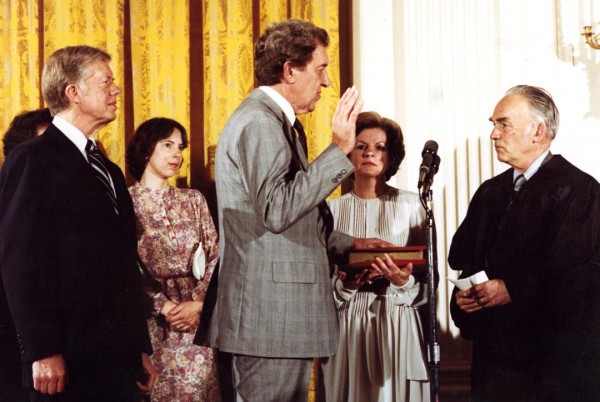
In May 1980, Edmund Muskie ’36 is sworn in as secretary of state under President Carter (left) by Frank Coffin ’40 (right), chief judge of the 1st Circuit. Also looking on are his daughter Ellen Muskie Allen (second from left) and wife Jane Muskie (second from right). Photograph by Bill Fitzpatrick/White House, courtesy of the Muskie Archives and Special Collections Library.
As its name suggests, the archives’ centerpiece collection is the papers of Ed Muskie, 1936 Bates alumnus, U.S. senator, vice presidential and presidential candidate and secretary of state.
“For almost every issue of national importance during his time, you’re going to find some information in the Muskie Collection,” Webber says.
The archives has two other identities: It’s the official repository for college records (this was Webber’s area of focus prior to his appointment as director), and it also holds a diverse collection of rare books, oral histories, photographs and films, manuscript collections and other items.
Among the recently processed collections generating interest are the papers of Professor of Chemistry Walter Lawrance. As the state-appointed “river master” of the Androscoggin River from 1947 to 1978, he had legal power to control the amount of pollution discharged into the river by the three major paper mills located along it.
Much of the Lawrance collection is now available online thanks to digitizing efforts by environmental studies faculty and students working with the archives.
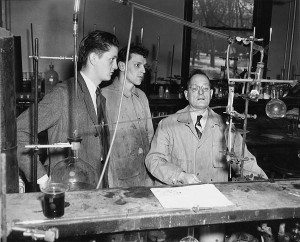
The papers of Bates chemistry professor and Androscoggin “river master” Walter Lawrance (right, in 1949) are now online. Photo courtesy of the Edmund S. Muskie Archives and Special Collections Library.
And as his card-collecting past suggests, Webber’s mission is to keep this complex collection of Bates history preserved, sensibly organized and accessible to today’s academic community.
For Webber and the archives staff, “accessible” has a proactive meaning.
Webber has taught or co-taught the history Short Term course “Introduction to Archives and Archival Science,” and he leads a popular tour of nearby Riverside Cemetery, the resting place of many early Bates leaders and professors.
“Every cemetery plot tells a story,” he says. “Language professor Benjamin Hayes and science professor Richard Stanley served Bates for a combined 64 years in the 1800s. Their friendship was likely very strong: Their families share a single plot.”
Webber says it’s important for the archives to keep one foot in the past and one in the present.
For example, students and professors who are curious about Bates’ inclusive history are always captivated by the college’s 1950s-era enrollment and career publications: one version for men and one for women.
“But they don’t just want to look at, say, When a Girl Goes to Bates in historical context,” Webber says. “They want to go beyond that and ask, ‘What does this say about Bates today?’ We’ve been inclusive for 150-plus years, but how has that really played out?”
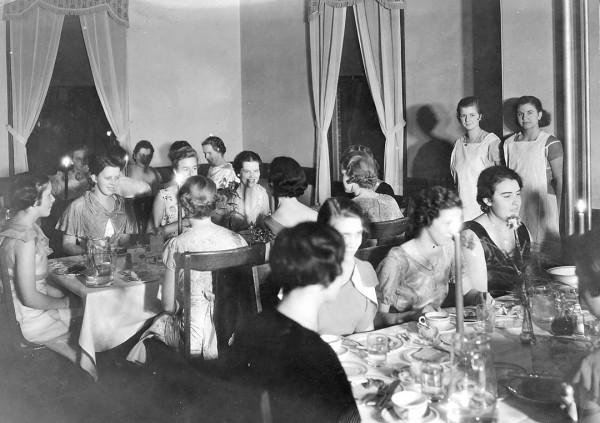
The women’s dining room in Rand Hall, circa 1920. The archives supports faculty and students looking at how Bates’ inclusive ideals have played out in reality. Photograph courtesy of the Muskie Archives and Special Collections Library.
Webber recalls how Professor of History Margaret Creighton and her students took on that question. For her course “A Woman’s Place,” examining gender and geography in the U.S. from 1800 to today, students looked at dining at Bates, which was not coeducational until the 1960s.
From looking at historical materials, including articles in The Bates Student, “the project morphed from ‘Here’s where women used to eat, and here’s where men used to eat,’ into a discussion of the culture of Bates dining today, the politics of who sits where and that sort of thing,” Webber says.
Early in his career, Webber did archeological fieldwork, then worked in the geotechnical services field in the construction industry for nearly a decade. Then he switched to archival work. “I’ve gone from archeology to geology to archives, so at least I’m getting more modern,” he jokes.
